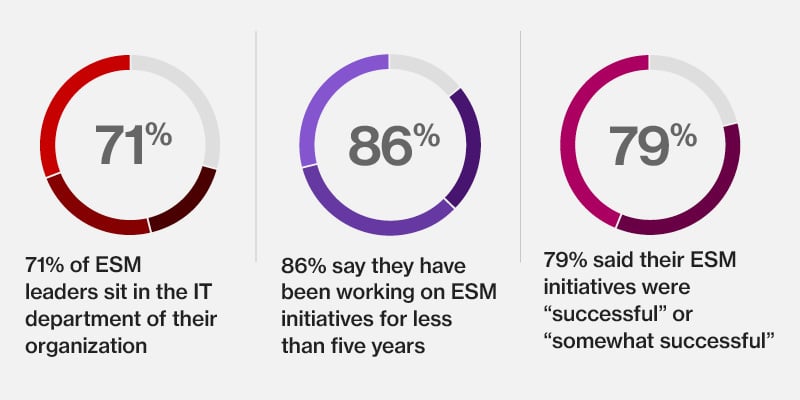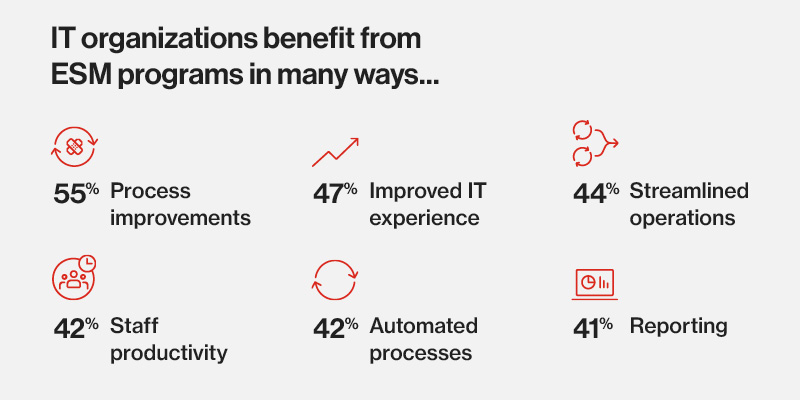Survey: 47% of IT Professionals Said Quality of User Experience Has Not Suffered Due to Remote Work
Over the summer, we surveyed nearly 400 IT professionals regarding their use of enterprise service management in their organizations. This post highlights some of the survey's key findings, including:
- 45% of IT professionals performed remote work run-throughs before the pandemic hit
- 29% of IT professionals reported they have been working on ESM initiatives for anywhere between three and five years
For many organizations, this preparation has paid off, with 61% of IT professionals claiming that they are consistently providing the same level of service working remotely, and 47% claiming that their quality of user experience has not suffered because of remote work.

Enterprise Service Management
The Ivanti study also assessed the value of enterprise service management (ESM) tools during the recent influx of remote workers.
ESM, which extends the use of IT service management (ITSM) processes to also address business-centric use cases in departments including HR, facilities and customer service, is proving to help organizations remain productive during this time of dramatic business change. The new study found that 65% of IT professionals say efficiency is ESM’s top benefit.

The cross departmental support of ESM contributes to its benefits. Nearly half (48%) of the survey respondents said ESM workflows crossed two departmental processes 25% of the time. In fact, when it comes to the number of non-IT services, workflows or requests IT helps with per quarter, respondents replied:
- 31% said 1-2 non-IT services, workflows or requests
- 30% said 3-5
- 17% said 6-10
This has resulted in business departments also seeing ESM’s value, with 64% finding efficiency to be the top benefit, followed by productivity (53%), improved experience (43%) and better alignment between department and end user expectation (42%).
When asked which departments IT professionals collaborate with the most on ESM initiatives, the survey found:
- 60% said Customer Service
- 53% said HR
- 40% said Facilities
The adoption of ESM isn’t new for most organizations. According to the survey, 29% of IT professionals reported they have been working on ESM initiatives for anywhere between three and five years, 34% reported the process has taken one to two years, and 23% said less than a year.
Since implementing their ESM program or solution, IT has realized valuable benefits, including:

“By hyper-automating processes and empowering users with self-service technologies such as chat bots, ESM technology has risen to support efficiency and user productivity demands in the face of our new remote-working world,” said Ian Aitchison, senior director of product management, Ivanti. “By bridging cross-departmental workflows, ESM is not only empowering IT to be more proactive and responsive, but also helping businesses remain productive and resilient in the face of changing workplace dynamics.”
The complete survey findings of this new remote work survey can be found here.

